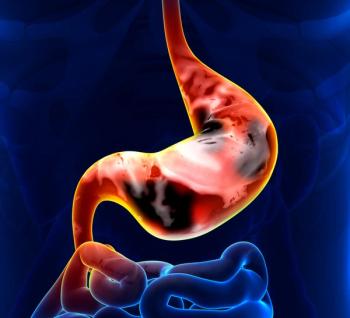
Circulating Tumor DNA May Identify Disease Progression in Patients with Rectal Cancer
Researchers assessed whether ctDNA could accurately differentiate metastases during the neoadjuvant period after surgery to guide therapy adaptation.
Circulating tumor DNA (ctDNA) was able to identify patients with rectal cancer at risk of developing metastases during the neoadjuvant period and post-surgery, according to a study published in Clinical Cancer Research.1
Given that preoperative chemo-radiotherapy (CRT) responses vary, researchers were assessing whether ctDNA could be an early indicator tumor response or progression to guide therapy adaptation in this patient population.
“If we can accurately differentiate the good responders from the poor responders, we may be able to adapt treatment and move away from a one-size-fits-all approach,” senior author David Cunningham, MD, director of clinical research and consultant medical oncologist at The Royal Marsden in London, said in a press release.2
A total of 243 serial plasma samples were analyzed in this cohort of 47 patients with localized rectal cancer undergoing CRT. Up to 3 somatic variants were tracked in plasma using droplet digital polymerase chain reaction (PCR), and RECIST and MRI tumor regression grade (mrTRG) evaluated response.
Circulating tumor DNA rates were 74% pretreatment, 21% mid CRT, 21% after completing CRT, and 13% after surgery. After CRT, ctDNA status was associated with primary tumor response by mrTRG (P = 0.03). With a median follow-up of 26.4 months, metastases-free survival was reduced in patients with detectable ctDNA after completing CRT (HR 7.1; 95% CI, 2.4-21.5; P < 0.001), persistently detectable ctDNA pre and mid CRT (HR 3.8; 95% CI, 1.2-11.7; P = 0.02), and pre, mid, and after CRT (HR 11.5; 95% CI, 3.3-40.4; P < 0.001) compared with patients with undetectable or nonpersistent ctDNA.
In patients with detectable ctDNA, a fractional abundance threshold of ≥0.07% mid CRT or ≥0.13% after completing CRT predicted for metastases with 100% sensitivity and 83.3% specificity for mid CRT and 66.7% for CRT completion. All 3 patients with detectable ctDNA post-surgery relapsed compared with zero relapses among the 20 patients with undetectable ctDNA (P = 0.001).
Detection of ctDNA was not associated with tumor response measured by RECIST.
Current methods to assess responses to neoadjuvant CRT include imaging and direct examination of surgically removed tissue, according to the American Association for Cancer Research. However, traditionally used methods for assessing responses can pose challenges due to the scarring of tumor tissue that arises from treatment.
Utilizing this research, the authors are now recruiting colon and rectal cancer patients in a multicenter study that will use the presence or absence of ctDNA to guide treatment decisions post-surgery. The study will include the collection and analysis of tumour tissue, serial blood samples, and clinical data in patients with newly diagnosed stage I, II, and III CRC.
“If the associations we’ve observed during the neoadjuvant period are confirmed, detection of ctDNA could also be used to tailor treatment for patients with rectal cancer in an attempt to prevent cancer spread,” Cunningham explained.
References:
1. Khakoo S, Carter PD, Brown G, Valeri N, et al. MRI Tumor Regression Grade and Circulating Tumor DNA as Complementary Tools to Assess Response and Guide Therapy Adaptation in Rectal Cancer. Clinical Cancer Research. doi:10.1158/1078-0432.CCR-19-1996.
2. Circulating Tumor DNA May Be Predictive of Disease Progression in Patients with Rectal Cancer [news release]. Philadelphia, Pennsylvania. Published December 18, 2019. aacr.org/Newsroom/Pages/News-Release-Detail.aspx?ItemID=1360. Accessed January 14, 2020.
Newsletter
Stay up to date on recent advances in the multidisciplinary approach to cancer.
















































































